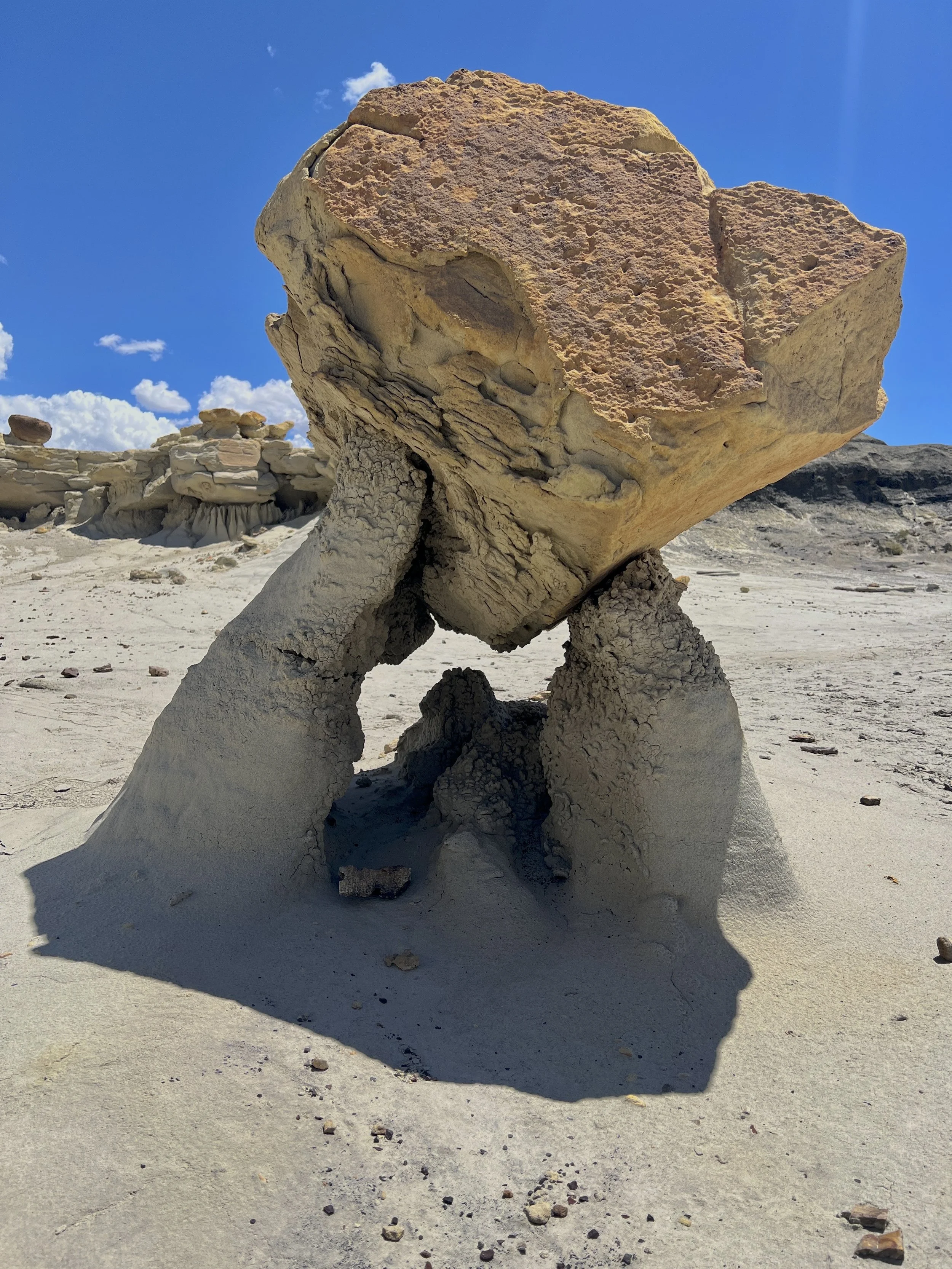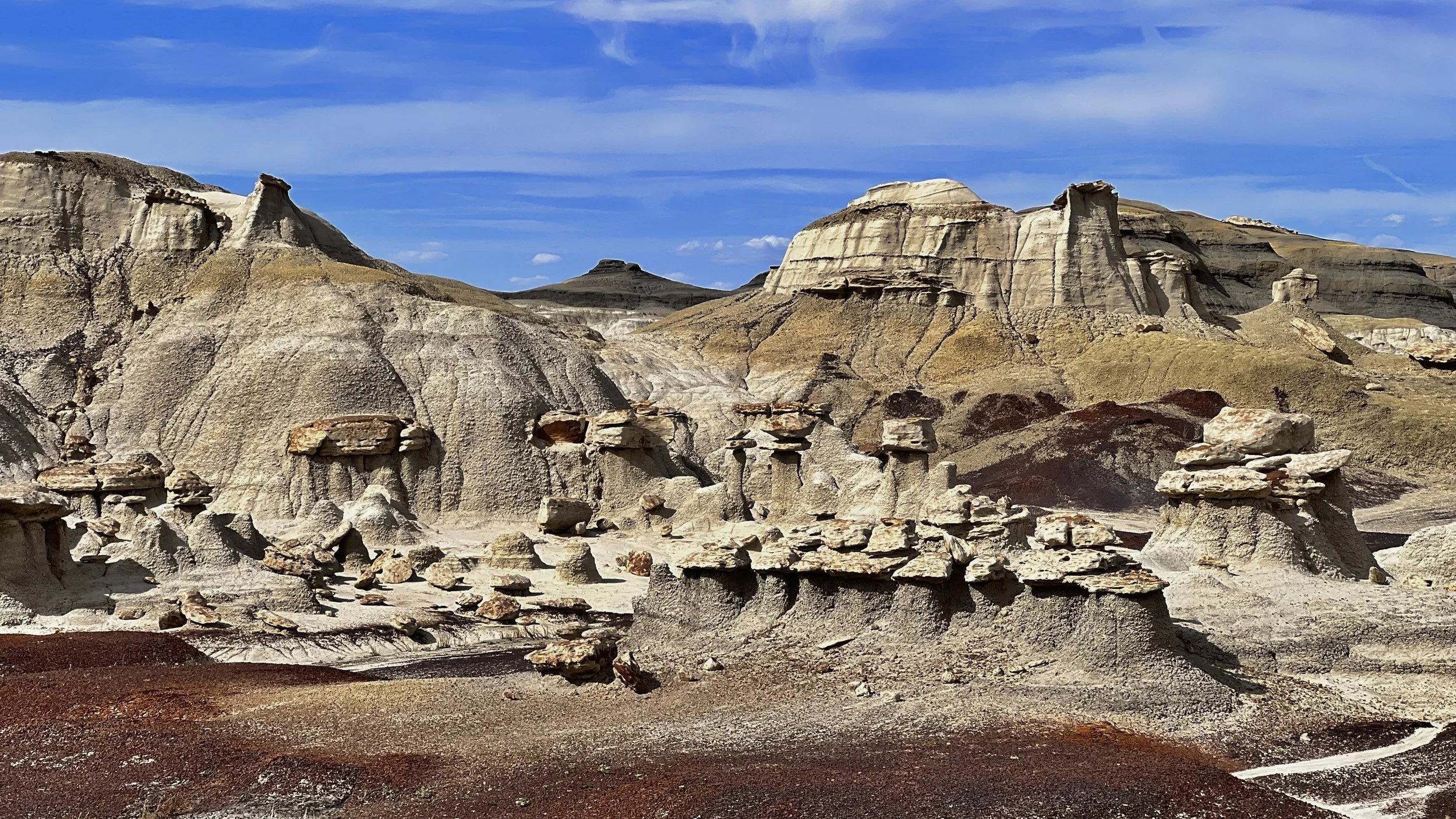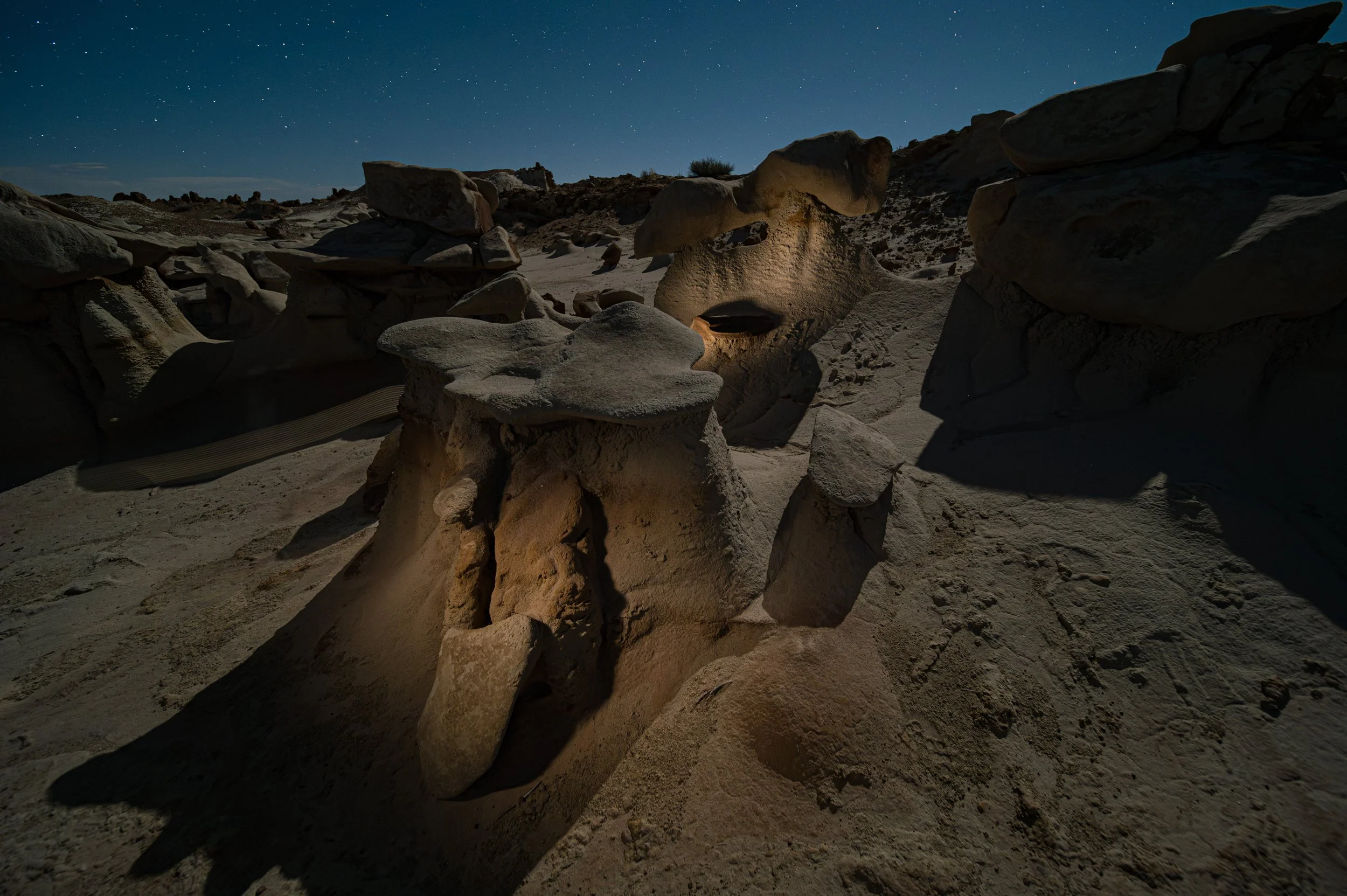Bisti Badlands & Ship Rock
Join us for an adventure to explore the myriad and desolate badlands of New Mexico’s northwest. We will visit some of the most famous locations among photographers, such as Bisti Badlands and Ship Rock, and some lesser known spots that are equally beautiful and equally inspiring. The workshop will be aided by local Navajo guides for the best access to the landforms. You will experience an alien dark-sky landscape kissed by a touch of moon and bathed in starlight.
Workshop Details
November 8-13, 2025 — 1 Spot Left
This is a 5-night, 6-day workshop. Your adventure begins on the morning of November 8 and ends after a final slideshow on the afternoon of November 13.
$2,649. Register below.
Skill level
Participants should have a firm grasp of the basic principles of photography and of their cameras, and have a comfortable understanding of night photography fundamentals.
Group size
14, with 2 instructors — 7:1 ratio
BLM website
Workshop Leaders
Registration
| • Deposit of $800 is required to reserve your spot at the workshop. |
| • Balance of $1,849 is due on August 9, 2025. → Pay balance here. |
| • You may choose the “Pay in Full” ticket if you desire to pay all at once. |
| • Last day for a cancellation request is August 8, 2025. (see cancellation and refund policy) |
| • The workshop fee does not include lodging, food, airfare, entrance fees, or transportation to or during the workshop. |
The Bisti Badlands & Ship Rock Experience
You have likely seen images of the Bisti Badlands, photographed most commonly at sunset, sunrise and night. It is certainly an astro-landscape photographer’s visual playground.
The Bisti/De-Na-Zin Wilderness Area is one location among many exciting areas of the San Juan Basin Badlands that we will visit, and each of them have thrilling opportunities to see and photograph hoodoos, petrified wood, fossils, stone wings, buttes, eroded sandstone, shale, mudstone, coal and silt, plus lots of alien-like landforms.
We will spend time on both BLM-managed and Navajo tribal lands. Our experienced local Navajo guides will take us to the most exciting locations to make images of some icons you know. And some you may not have seen. Our esteemed guides will also share with us their stories of these lands and speak about the Navajo’s connection to the land and sky.
In November, the sun sets early at 5 p.m., darkness begins right after 6:30 p.m. and we will see the Milky Way core until a little after 7 p.m. But winter is near, and we’ll also see Orion rise above the horizon.
We also have a sweet spot of a waning gibbous moon rising around 8 p.m. early in the workshop and a quarter moon rising around 1:50 a.m. at the end of the workshop. That means many incredible sunsets and moonrises over these stunning landforms, as well as ample opportunities for dark skies and light painting with the help of the moon.
What You Should Know
This workshop caters to knowledgeable photographers with an intermediate or higher skill set. Participants should have a firm grasp of the basic principles of photography and of their cameras, and have a comfortable understanding of night photography fundamentals.
We will be happy to offer advice and answer questions about both day and night photography, but the focus of the formal education will be panoramas, twilight blends and light painting.
If you would like to attend this workshop but are unsure whether you have adequate night photography skills, we can offer pre-workshop tutoring to get you ready for your adventure with us. Alternatively or additionally, a few of us have written books that may be productive pre-workshop reads.
What You Will Learn
You will use every tool in the tool bag!
TOPICS COVERED WILL INCLUDE:
planning and scouting with PhotoPills
twilight blending
moonrise photography
dark sky photography
light painting
processing twilight blends, single-row panoramas and light-painted images
and more …
Night Conditions
Logistics & General Info
Travel
Our base will be in Farmington, New Mexico, which is not close to any metropolitan area. It is a city of 125,000 people, but requires some driving to get there. Most of the shoot locations are a 30- to 40-minute drive from the hotel, plus a hike with your photo gear over mostly flat terrain.
You are responsible for arranging and paying for your own transportation.
Nearby Airports:
Durango-La Plata (DRO) — 1 hour from Farmington
Albuquerque Sunport (ABQ) — 3 hours
Rental Car
You will need a rental car to get to the workshop and to the shoot locations.
There is no need for high-clearance or four-wheel-drive, but having an AWD SUV is a good idea as we will travel on some dirt/gravel roads.
If you are interested in carpooling or sharing a rental car, let us know and we will try to connect you with another attendee looking for the same.
Lodging & Food
You are responsible for arranging and paying for your own meals and accommodations.
Lodging
You are not required to stay at the official workshop lodging, though doing so does make it easier to meet with the group each day.
Info and group code will be sent once our lodging partner is ready to begin taking reservations.
If you are interested in sharing a room, let us know and we will try to connect you with someone like-minded in the group.
Food
Farmington has ample food options, from the historic downtown to many restaurants along the commercial strips.
We encourage eating two meals per day—a good breakfast and a great late lunch.
When on the night shoots, you may wish to bring snack food or a sandwich and plenty of water.
Weather
Expect daytime highs in the mid-50s F, lows in the 30s.
Recommended Attire
Pants and a sweatshirt for daytime.
A sweatshirt/sweater and warm winter jacket will likely be useful at night, and a base layer might not be a waste of packing space. Layers are good.
Warm, comfortable and protective shoes are recommended for getting around. There will be hikes, and we will often be hiking in areas with no established trails, so quality trail shoes or hiking boots are necessary for safe navigation.
Exertion Level
The exertion level of this workshop is Moderate to Active. (See more about our classifications.)
Most of the shoot locations require hiking 2 to 4 flat miles round trip (sometimes more) in arid conditions. So bring your hiking boots, a water bladder and some snacks!
Note: To ensure the safety of individuals and the group, the workshop leaders may use their discretion to limit an attendee from engaging in a vigorous activity on-site should that person’s physical health or ability be in question. If you are unsure about your ability to meet the physical demands of this workshop, we will be happy to discuss your concerns one-on-one before you register. You are also, of course, welcome to attend a workshop and sit out any physical activity that makes you uncomfortable. In such cases, we can provide you with ideas for alternative shoot locations for that time.
Considerations
IMPORTANT: We encourage reading our FAQs page for more information about skill and gear requirements, and other information that pertains to all our workshops.
If you have questions, please contact us—we're happy to talk it over with you.
Why are Badlands so Good? …
“I got to spend a lot of quiet time in a nearly silent location. More often than not, any sound was the wind, my breath or an overactive imagination.”
Among the locations that come up over and over as a dream spot for our attendees is the Bisti Badlands. I am a huge fan of desiccated environments graced by unsubtle erosion, so I visited the area a couple times. Yeah, it’s cool. I am in love.
My visits were solo, so I got to spend a lot of quiet time in a nearly silent location. Sometimes I’d hear the barking of a dog from a nearby hogan just outside the boundaries of the Bureau of Land Management (BLM) parcel, but more often than not, any sound was the wind, my breath or an overactive imagination.
Bisti Badlands are one portion of the larger Bisti/De-Na-Zin Wilderness Area. Translated from the Navajo language the name comes from, Bisti means “a large area of shale hills,” and De-Na-Zin (DEH-nah-zin) comes from the Navajo words for “cranes.”
The soil in the badlands is not very stable. It can be compacted in some places, and loose in others. It’s also highly erodible, so I was careful to try to minimize the impact my passage had on the land beneath by trail shoes.
There are no established trails. You may see the worn path blazed by many previous explorers, but when exploring, I was careful to track on GPS and use wayfinding skills to maintain awareness of my location. Once dark, it all changes.
I found a wonderful peace among the dark skies and strange landforms. Around every bend or above and below there was something new to be discovered. There are certainly some “greatest hits” in the area, but honestly you can find great things to include in a composition nearly anywhere.


































